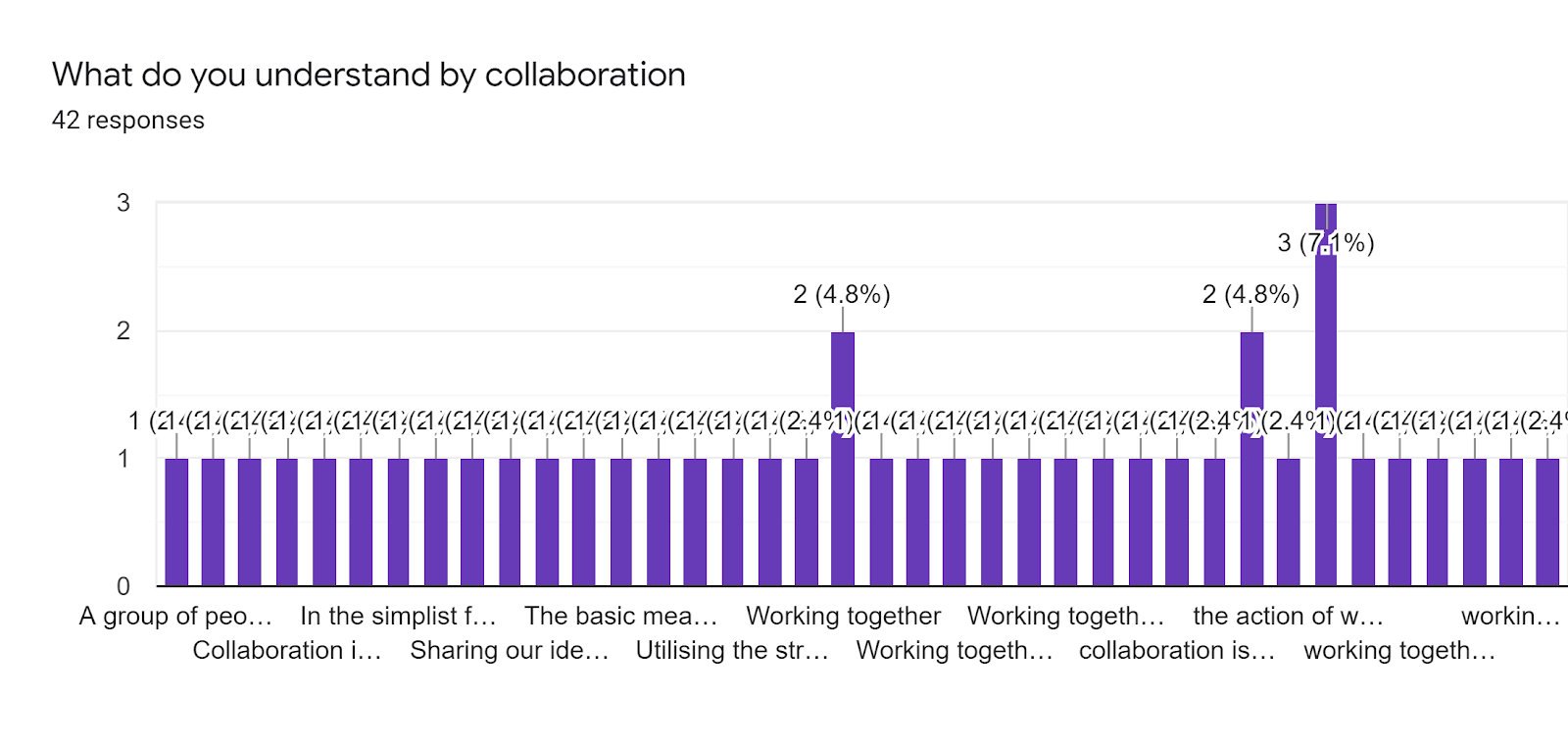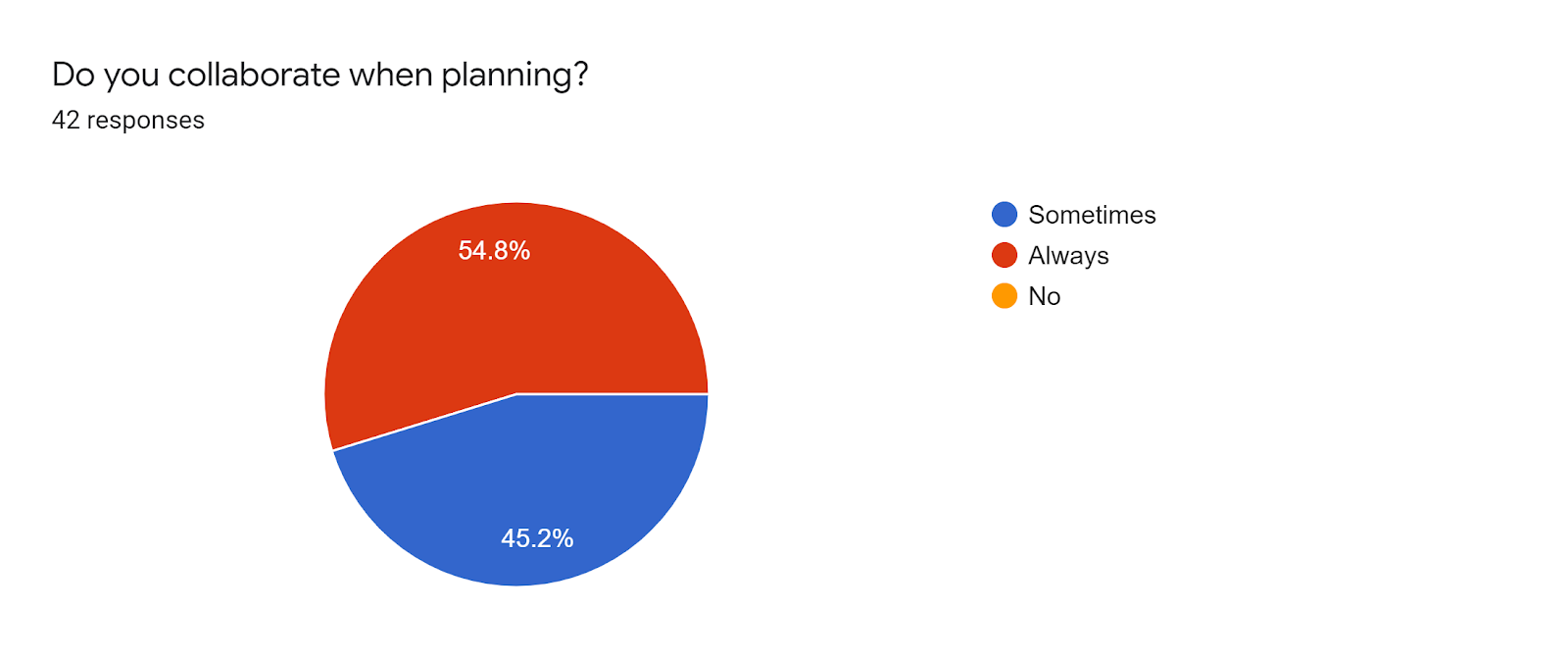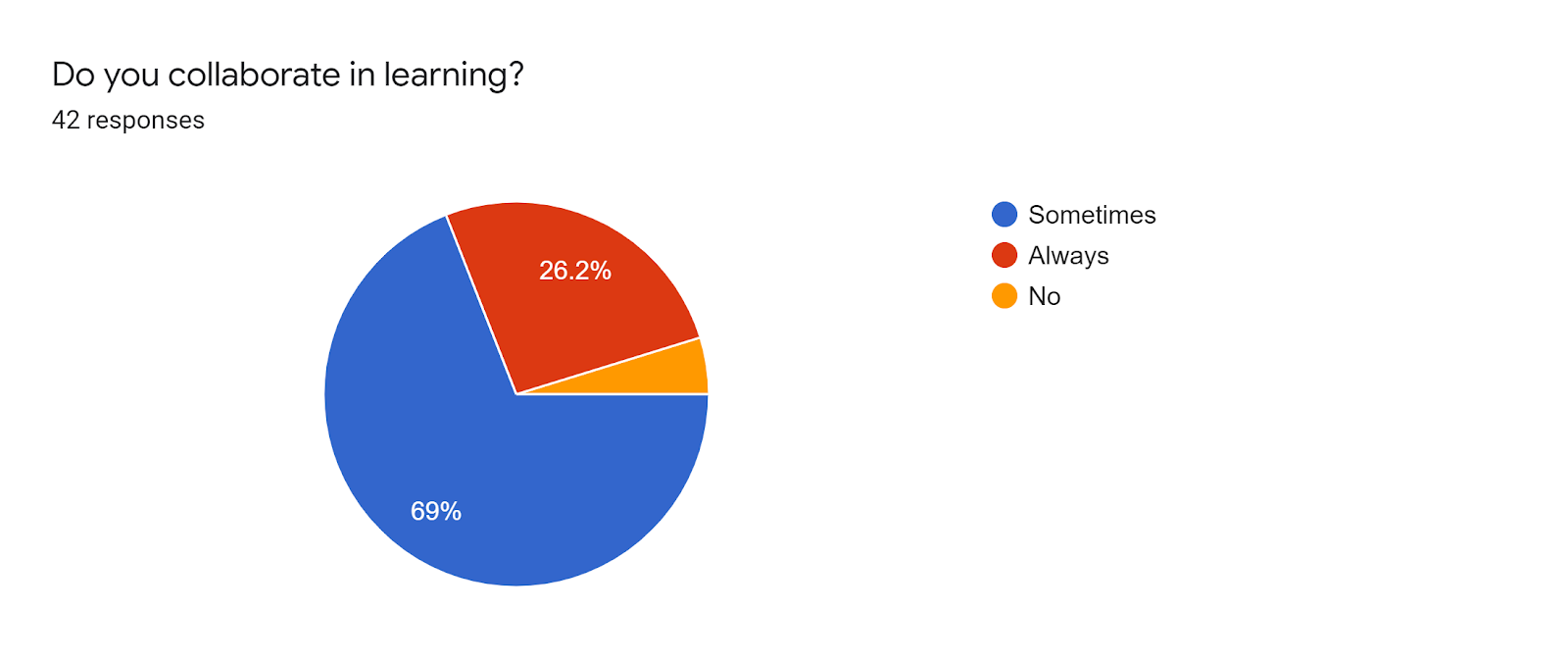The main barrier portrayed in the data is time. This is a word all teachers can empathise with. We need to use our blog opportunity to investigate how this can be overcome. How can we use time to support collaboration i.e sharing work to reduce workload. Tools was also a common factor, we need to research appropriate tools that people can choose to interact with that best suits their environment. Trust was the third factor of concern which is very vital in collaboration. We need to spend time looking at how we can develop trust, build trust and work alongside different people. In order for collaboration to be effective you need a level of professional trust, how can we develop this?
This year, Tash is home being a mum. I am lucky enough to continue my journey about collaboration and learning through play with my colleague Silivia
Showing posts with label SPublish. Show all posts
Showing posts with label SPublish. Show all posts
Thursday, 30 April 2020
Digging Deep into Initial Data Part 3
The main barrier portrayed in the data is time. This is a word all teachers can empathise with. We need to use our blog opportunity to investigate how this can be overcome. How can we use time to support collaboration i.e sharing work to reduce workload. Tools was also a common factor, we need to research appropriate tools that people can choose to interact with that best suits their environment. Trust was the third factor of concern which is very vital in collaboration. We need to spend time looking at how we can develop trust, build trust and work alongside different people. In order for collaboration to be effective you need a level of professional trust, how can we develop this?
Digging Deep into Initial Data Part 2
- Over a third of the satellite classes feel as though they do not collaborate with the host school.
- Is the purpose of a satellite class not to just be a stand alone but to try and find ways of integrating some of the children’s learning alongside the mainstream. Using them as role models and vice versa.
- It is an excellent resource right on their doorstep.
- What are the barriers here???
In reflection: Satellite classes create an opportunity for better understanding among the community to then build stronger relationships. This is not just for students but benefits everyone in the school community. Are satellites offering opportunity for PD to host school?
This is a very important aspect of a special school: the relationship between teacher and teacher aides. We are wanting to better understand how teacher aids are involved and playing to their strengths. According to the data currently over 75% of staff feel they are working alongside their teacher aides. Due to our high teacher aid ratio this is very important. In reflection: This graph was also depicted from information only from the teacher point of view, we are also wanting to ask teacher aids the same question. For collaboration to work well in the classroom there needs to be opportunities for group learning and break out space that in a special school is supported by teacher aid resources. Do teacher aides feel they understand the learning and activities? How can we best support this relationship to ensure successful and meaningful collaboration is in place?
Digging deep into initial Data Part 1
A survey went out to the staff at school re their understanding and use of collaboration. We have used this data to highlight key questions for our blog and learning going forward. Please find our data analysis below:



From the above questions we wanted to find out if people believe they are involved in a collaborative planning partnership and if so, who is involved in their collaboration. The data shows us that over half of the staff feel they plan collaboratively; this is a great statistic for us to work with as we can find out what enables the 54% of staff and we can spend time learning about the barriers for those who plan individually. When looking at the bar graph we can see that most people collaborate with their pathway.
In reflection this is a great start and as group sizes are upwards of 5 can lead to great diversity in ideas. We then need to see how this translates to the classroom and if this collaboration continues throughout the term or if it is just at the beginning for new learning and ideas. Does this collaboration lead to ongoing planning support? Should we be meeting during the term to reflect on our long term planning?

In reflection we need to dig deeper and ask specific areas of school if they do collaborate in teaching what does this look? Do we invite others to come and observe us and see if they feel we collaborate. How could this be used and altered to fit for their learners. It is a case of reflective teaching observing, giving feedback and feed-forward to each other.

This question needs more depth to get a better understanding of staff's interpretation. When we asked this question we wanted to know if teachers collaborate in learning with their students. Are children actively involved in collaborative practice amongst their peers?
In reflection: We are wanting to find out how students respond to collaborative practice and what their barriers and enablers are. We need to see what ways we can ensure active participation among teachers and students we are all learners together it is a two way street.
- Most people think that collaboration is about working together, team teaching. This is true but does it stop there?
- If you work together: how do you know if it is working effectively?
- Others have mentioned: sharing, use of resources: practical and intellectual, utilising strengths: what does this look like?
- Working towards a common goal: When you get to the goal is collaboration over?
From the above questions we wanted to find out if people believe they are involved in a collaborative planning partnership and if so, who is involved in their collaboration. The data shows us that over half of the staff feel they plan collaboratively; this is a great statistic for us to work with as we can find out what enables the 54% of staff and we can spend time learning about the barriers for those who plan individually. When looking at the bar graph we can see that most people collaborate with their pathway.
In reflection this is a great start and as group sizes are upwards of 5 can lead to great diversity in ideas. We then need to see how this translates to the classroom and if this collaboration continues throughout the term or if it is just at the beginning for new learning and ideas. Does this collaboration lead to ongoing planning support? Should we be meeting during the term to reflect on our long term planning?
- Graph shows that half of staff feel they sometimes collaborate when teaching.
- Almost half collaborate always: what does this look like?
- Need to break this down further, if they do , how can we see this if we walk into the classroom.
- This may relate to planning and the use or rotations, the learning spaces and break out rooms and other areas available to the teacher.
- If you don’t collaborate why not? What are the barriers?
- How have they interpreted this question.
- Different areas of the school may interpret this question in different ways depending on the needs of their children
In reflection we need to dig deeper and ask specific areas of school if they do collaborate in teaching what does this look? Do we invite others to come and observe us and see if they feel we collaborate. How could this be used and altered to fit for their learners. It is a case of reflective teaching observing, giving feedback and feed-forward to each other.
This question needs more depth to get a better understanding of staff's interpretation. When we asked this question we wanted to know if teachers collaborate in learning with their students. Are children actively involved in collaborative practice amongst their peers?
In reflection: We are wanting to find out how students respond to collaborative practice and what their barriers and enablers are. We need to see what ways we can ensure active participation among teachers and students we are all learners together it is a two way street.
Tuesday, 28 April 2020
Introduction to 2020 Teaching as Inquiry - Collaboration
Hi, we are in our 3rd year of working together at the Sommerville Satellite at Stonefields School.
Stonefields school is purpose built for collaboration with open learning areas, different types of breakout spaces and different learning equipment, beanbags, stools, chairs, different shaped tables and computer areas.
For this to be a successful environment for teaching and learning to take place there needs to be a positive staff relationship with collaboration amoung staff, learners and whanāu. We feel we are working towards creating this successful space and hope to use this COL opportunity to trial different collaborative practice, learn from Stonefields, an exemplar collaborative school and share our new knowledge back with Sommerville School and other schools within the COL.
We also want to use this as an opportunity to see how group learning in collaborative spaces supports ākonga engagement specifically within our Hub. We will look at how we can ensure all learners are benefiting and learning with, from and about each other in different group activities.
Subscribe to:
Posts (Atom)
